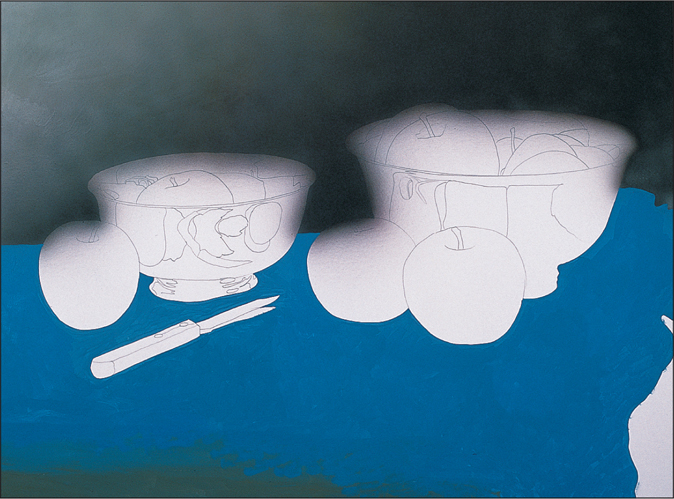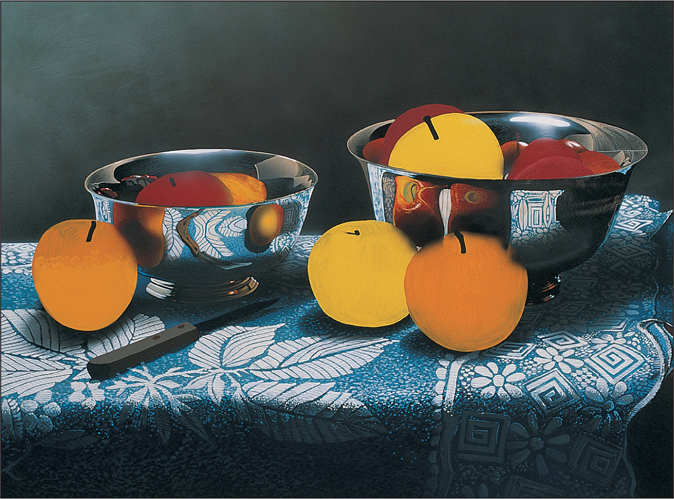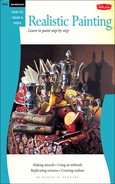DEMONSTRATION: STILL LIFE WITH BLUE CLOTH

1 Sketch the drawing with an HB pencil on hot-pressed illustration board, concentrating on the large basic shapes. The details will be transferred from the drawing once the painting is begun.

2 Paint the background with an airbrush and black, burnt umber, Naples yellow, alizarin crimson, and viridian gouache. Paint the foreground with a brush, using cerulean blue, cobalt blue, ivory black, and zinc white.

3 After establishing the cloth pattern, use transparent black watercolor to create shadows on the overhanging cloth. Again, the airbrush is an excellent tool for applying watercolor washes over gouache.
4 Apply a gouache underpainting for the fruit. Paint most of the fruit lighter than the true local color, but make the reflections of the fruit on the silver darker. Paint the apples from light to dark; the silver from dark to light. The airbrush makes painting apples easy; gouache can be sprayed on in smooth gradations—just like the skin of an apple.

5 Painting silver means painting the reflections of the colors around it. Look for large masses of color in the reflections first, and then paint the small details. Notice that the cloth, background, fruit, and floodlights are reflected in the silver—all somewhat distorted.

STILL LIFE WITH BLUE CLOTH (24" × 34") gouache on illustration board, Collection of Dan and Sarah Harrington
6 Complete the painting by finishing the apples and knife. First, airbrush highlights on the apples with permanent white, and then finish off with a small dab of white and a #00 brush. The highlights create a shimmer of intense light on the apples.





